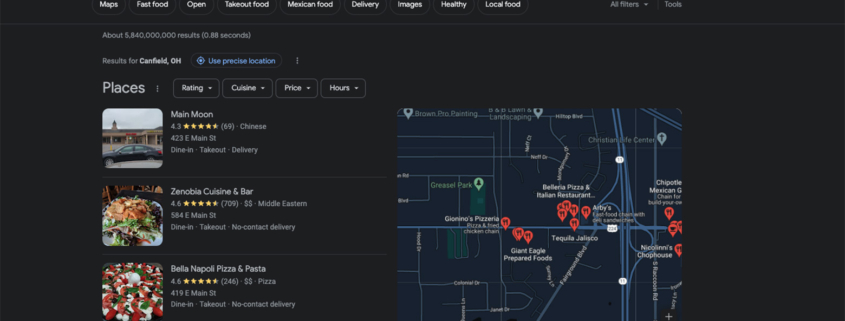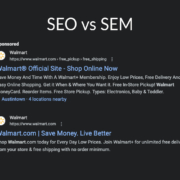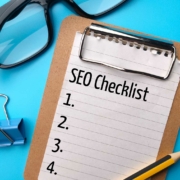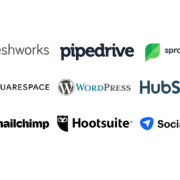Local SEO: How to Optimize Your Business for Local Searches
Let’s face it folks, business listings in the phone book don’t pull in local customers the way they used to. When was the last time you even saw a phone book, let alone used one? That’s what I thought.
Now, if local customers are looking for a product or service, they turn to Google search (or on rare occasions, some other search engine like Bing or Yahoo). If you’re the owner of a small business, you may be in despair about this, thinking “Woe is me, searchers will never see me – big, national chains own the SERPs.”
Quit panicking and listen – a good local SEO strategy can help. With the right search engine optimization, you can get to the top of the local search results. Take a minute to calm down and breathe, and then we’ll teach you how to lift your local search ranking.
Why SEO Is Important For Your Local Business
As we said before – people aren’t exactly flipping through the yellow pages to find what they’re looking for anymore. You need to make sure you’re reaching your potential customers whenever they perform an organic search. You may think that a strong online presence or digital marketing strategy won’t do much good if you’re a small business owner with a brick-and-mortar store – but just trust us.
We’re not just talking out of our asses. Consider this: 30% of mobile searches are done for local listings, and 78% of those searches result in an in-store purchase. With the rise of mobile devices, local customers are searching for business information on the fly – and if you don’t have your business online and searchable, they could be cruising right past you.
Besides – when it comes to local searches, you’re not competing against every national chain to reach the top of the search engine results. Local SEO is a little bit different from traditional SEO. Don’t freak out; we’ll break it down.
The Local Pack
When a customer searches on Google for a product or service, the first thing Google will deliver on its results page is a map and multiple locations that fit the search query. This is known as a local pack and is essentially a business directory of the top three spots Google thinks potential customers should see.
Local SEO Ranking Factors
The ranking factors for local SEO include:
-
- Prominence: how important Google perceives your business to be
- Relevance: how closely your business matches the search query
- Distance: this one kind of explains itself, doesn’t it?
When it comes to local SEO, some of the signals the ranking factors pick up on overlap with traditional SEO, such as keyword research and link building. This is good for targeting the top of SERPs across the board. But when it comes to local SEO, things like your Google Business Profile and NAPs (no, not that kind of nap) come into play as well. What’s a NAP? Don’t worry – we’ll get to that in a minute.
Local SEO Tips
Hopefully, now that you know it’s not hopeless when it comes to reaching the top of the local search results, you feel motivated to knuckle down and ace those ranking factors. Great! Let’s get you started. Here’s some Local SEO expert advice on optimizing your local online presence.
Local Keyword Research
All SEO starts with the same step – keyword research. The difference is you’re looking to optimize for location keywords – this means taking the name of your state, city, or even neighborhood and combining it with your major SEO terms.
When it comes to keyword research, there are many different local SEO tools you can choose from. Semrush has a tool that allows you to research your local competitor’s website and what keywords they’re ranking for. This can help you see what geographic phrases are bringing them the most traffic.
You can also let Google autocomplete show you what people are most likely searching for in your area. For instance, when you throw “pizza” into the Google search bar, the first few results are “pizza near me,” “pizza canfield,” and “pizza Youngstown Ohio.” These are common geographic keywords that you want to work into your online presence.
Include Local Keywords in Your On-Page SEO
Now, we’re not saying you should change your business name to include geographic keywords. But – you do want them on your website. A great way to build localized content is landing pages with location details. If you have multiple locations, take the time to make a service page for each one to hit that audience.
When crafting blogs or social posts, consider your local keywords and how you can work them in – especially in your meta descriptions, which will signal to your target audience it’s relevant, and in your title tags, which will signal the algorithm.
Level-Up Your Google Business Profile
Another big way to build your local SEO relevance is your Google Business profile. GBP (formerly Google My Business – or GMB) is like a free local SEO tool – and is basically your key to placing high on Google Search’s local pack and Google Maps.
You put your business information in GBP – your business name, address, phone number, website – etc. so that people know where to find you. Verifying your business on Google boosts your relevance and reputation in Google’s algorithm eyes (obviously), but it can also help build credibility with your potential customers.
Get Online Reviews
Another way to build credibility with your target audience (and with the Google search engine) is to rack up customer reviews on your GBP. This helps build your prominence with Google. Online reviews anywhere you can get them – Amazon, Yelp, Facebook – can all be a great boost to your local SEO.
Have you been waiting and waiting, and no customer has left a review on your social media or your GBP? Try offering a promotional discount for customers who leave a review of your services online – that’s always a good way to motivate folks. (We know you’ve fallen for it at least once!)
Get Local Citations
A local citation is any spot online that mentions your business information, such as business name, address, and phone number (or NAP – see we told you we’d get to this). GBP is one. But this can also be blog posts, online directories, landing pages – anything online, really, with your info. The more places you have NAPs that are consistent with their information, the more trustworthy it appears to be to the algorithm, and the more likely it is to place high on the local SERPs.
You do have to watch out for potential fraudulent entries. Anyone can create a NAP by posting your information online – and they could post the wrong information. You want to make sure that not only are you submitting your information to as many online directories as possible, but also monitoring for potential false citations and disputing them.
Build Backlinks
Backlinks are one of the strongest ranking signals – for regular ol’ SEO and local SEO. These are links on other sites that link back to yours – thus increasing its prominence and the algorithm’s trust in you. Regular and local link building strategies are pretty similar, but here are some ways you can especially boost your local backlinks:
-
- Send out press releases to local news
- Contact local businesses (you’re not in competition with) and swap links
- Create local content to post in community groups
Reach the Top of Google Maps, Local Listings, and More
Now that you’ve got the ins and outs of local SEO, it’s time to go out and seize the day.
What’s that – you’re still panicking? You still don’t think you can do it. Don’t be silly – but if you’re really too nervous to do it alone, well, you can always call on us. Local SEO just happens to be a specialty of ours. Along with social media marketing, website building, Amazon optimization … really any and everything to do with digital marketing. Drop us a line, and find out what we can do for you and your search ranking today.












